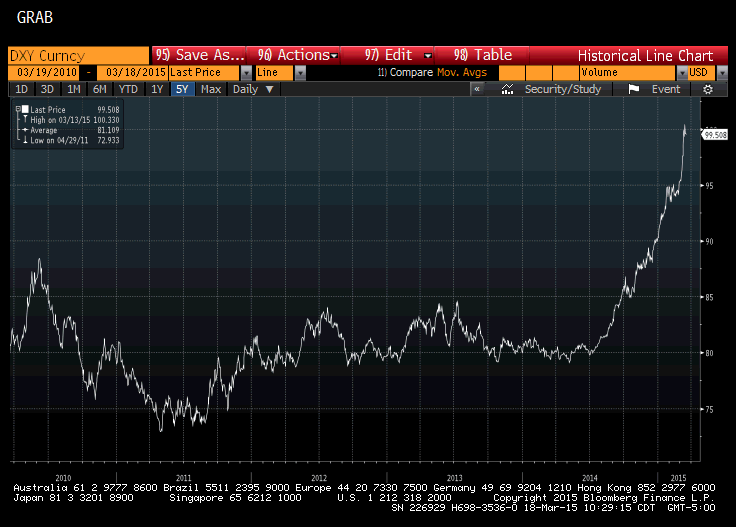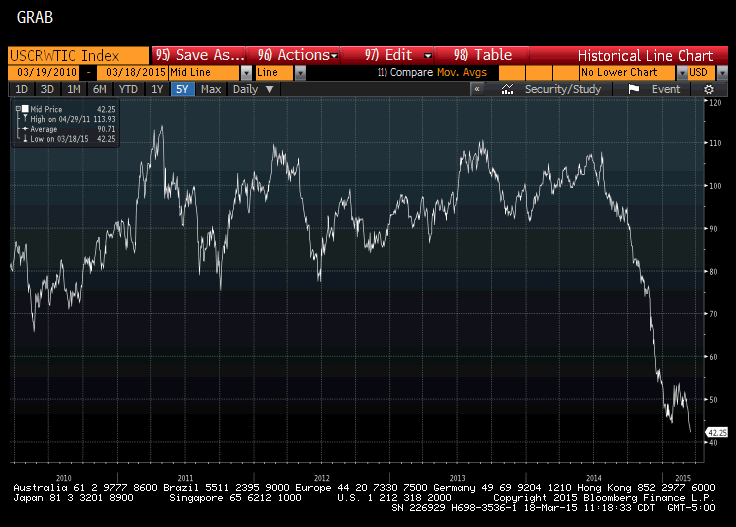Janet Yellen, Chair of the Board of Governors of the Federal Reserve System, spoke last week after the Board’s two-day meeting. Her speech was an attempt to clarify the Fed’s stance on raising interest rates someday.
We all know they will eventually raise interest rates, but many economic “know-it-alls” keep playing a cat and mouse game, trying to figure out exactly when and by exactly how much. As I am typing this, there is a headline on CNBC that reads “BRACING FOR THE 1ST RATE INCREASE.”
At Boyer & Corporon Wealth Management, we are not BRACING for the first rate increase because we don’t care when it happens and we don’t think it will be that significant. More on that later…
Ms. Yellen stated that economic conditions have improved and further improvement is expected. Therefore the Board has modified its forward guidance. Translation: if we feel like it, we will raise rates earlier or later than you might have expected.
Though I don’t know how they could really know what we were expecting.
She also commented that, at the Board’s December/January meeting members stated that they will have “patience” with regard to when they feel the need to raise rates. The Board has now removed the word “patience,” but that doesn’t mean they will be impatient. Translation: if we feel like it, we will raise rates earlier or later than you might have expected.
She further remarked that future economic growth will decline due to the strong dollar. Unemployment has room to drop and inflation will remain tame. Translation: we can raise rates earlier or later than you might have expected, but we probably won’t because the economy is not growing THAT fast, and because there are no significant signs of inflation.
Bottom line is that investors rely way too much on what the Fed says. It’s folly to do so because the Fed can change their targets from meeting to meeting. Not long ago, the Fed’s target for raising rates was when the unemployment rate declined to 6%. Unemployment now stands at 5.5% and the Fed did nothing except change their target for unemployment to 5%.
But the Fed’s real problem is the dollar, which continues to defy gravity. The DXY Index, which pits the dollar against a basket of other major currencies, has been on a vertical spike for over a year. The five-year graph of the DXY Index (below) shows the dollar has appreciated approximately 25% in the past 15 months.

As I pointed out last month, a strong dollar is a double-edged sword, making it cheaper for us to purchase foreign goods, but making it very expensive for foreigners to purchase our products. Since companies like Coca-Cola and John Deere like to sell their products all over the world, a strong dollar is not good news for them.
(By the way, this is a great time to take that European vacation. I will be attending the annual conference of the CFA Institute next month in Frankfurt, Germany. Good timing!)
The reason that raising interest rates is a problem for the Fed is that higher interest rates attract capital… capital from all over the world. New capital from all over the world drives the dollar to even higher levels, making our products even more expensive to foreigners and thereby putting a damper on our exports. Ultimately, this is not good for our economy.
One of the products we purchase a lot of from countries is oil. And since oil is priced in dollars, it has become cheap, cheap, cheap. Not coincidentally, the five-year graph of the price of oil is almost the opposite of the graph of the dollar above.

Oil is now trading below $43 per barrel, the lowest it has traded in six years. Don’t be surprised to see it go lower.
Above, I stated that it doesn’t matter “when” and “how much.” I suppose that isn’t exactly true if the Fed raised interest rates by 5% tomorrow or some other ridiculous scenario like that. The reality is that a small increase in the Fed Funds rate later on this year is already baked into most investors’ expectations. An increase such as that will be a total non-event (not as big of a non-event as Y2K, but a total non-event nevertheless).
So as many hints as the Fed gives about raising interest rates, don’t be surprised if it doesn’t happen until September (or even later) and don’t be surprised if the increase is insignificant.
Our economy, which has been slowly growing for the past five years, will continue to slowly grow, although it might get a slightly bloody nose from walking into the wall of a strong dollar.
The U.S. stock market has turned rather flat the last several months, trading sideways. Although the market lost ground in January, it gained it all back (and more) in February. The S&P 500 climbed 5.74% in February. Even foreign markets, which have been abysmal for the past seven years, increased over 5% in February.
The inevitable Greek default was kicked a little further into the future, allowing investors all over the world to have one less thing to worry about. And since that was the main issue investors were worried about, markets were able to rally.
At Boyer & Corporon Wealth Management, we are not concerned with what the Fed is going to do or how long it takes them to do it. However, interest rates will eventually increase, and because of that we continue to gradually shorten the duration of our portfolios.
This information is provided for general information purposes only and should not be construed as investment, tax, or legal advice. Past performance of any market results is no assurance of future performance. The information contained herein has been obtained from sources deemed reliable but is not guaranteed.
